CATHERINE MARY BUCKTON
First woman in Leeds to hold elected public office
Member of the Leeds School Board 1873-1882
Mrs Buckton was very involved with the School Boards - read more about them here.
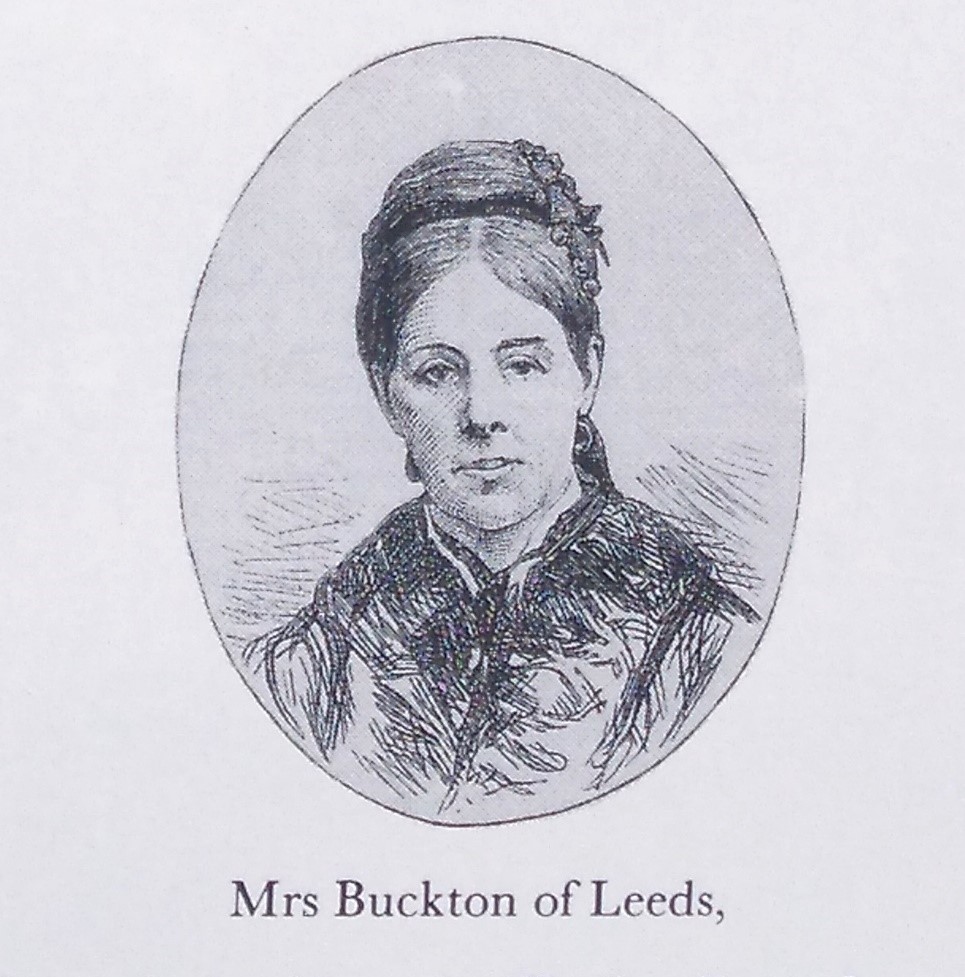 Catherine Buckton was born in 1827, one of nine children. Her Welsh father was a surgeon specialising in the treatment of cholera and a pioneer of public health reform. Her father lost his money when the local bank in Bridgend failed. He moved to Stoke Newington where 5 of his children including Catherine were born. Part of his practice included the fever hospital. The family worshipped at Newington Green Unitarian Chapel, which had a reputation for political radicalism and intellectual enquiry; Mary Wollstonecraft started a school nearby (1784-5) and attended this chapel.
Catherine Buckton was born in 1827, one of nine children. Her Welsh father was a surgeon specialising in the treatment of cholera and a pioneer of public health reform. Her father lost his money when the local bank in Bridgend failed. He moved to Stoke Newington where 5 of his children including Catherine were born. Part of his practice included the fever hospital. The family worshipped at Newington Green Unitarian Chapel, which had a reputation for political radicalism and intellectual enquiry; Mary Wollstonecraft started a school nearby (1784-5) and attended this chapel.
In 1834 the national cholera epidemic reached Bridgend and the family were recalled to Wales.
Catherine's mother was from Bradford which is probably how Catherine met Joseph Buckton, a successful Leeds cloth merchant. They married in 1848 and had two children, Walter and Annie.
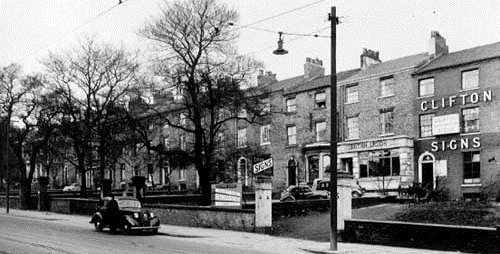
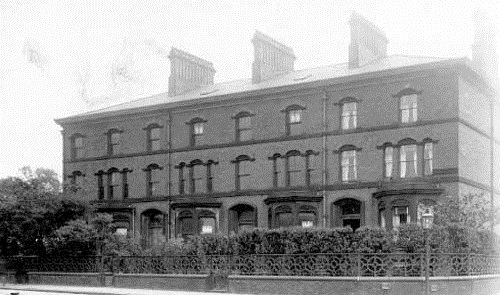
They lived at 1 Blenheim Terrace (above left in 1953); this end of the terrace was demolished in the 1970s when Blackman Lane was widened (left).
In 1863 they moved to 4 Moorland Terrace (above right), overlooking Woodhouse Moor; the house on the far left of this photograph (right).
The Bucktons were involved in all the great Liberal causes of their day - abolition of slavery, repeal of the Corn Laws, sanitation, temperance and education. Catherine was a member of the Leeds Ladies Educational Association committee responsible for making the Cambridge University Extension lectures and examinations available to women in Leeds. She became involved in setting up the Yorkshire School of Cookery (now part of Leeds Beckett University) and in the negotiations to open Leeds Girls' High School.
She and a fellow member of the Leeds Ladies, Lucy Wilson, mounted a joint campaign as candidates in the first elections to the newly established School Boards in November 1870 but neither was successful.
The letter from "M" published in the Leeds Mercury just before the election was probably written by Constance Holland, who also stood as a candidate.
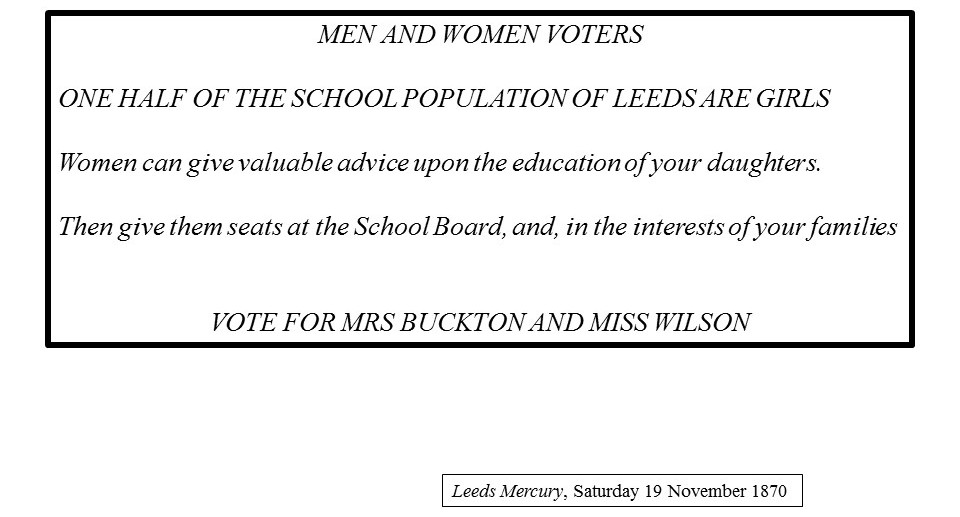
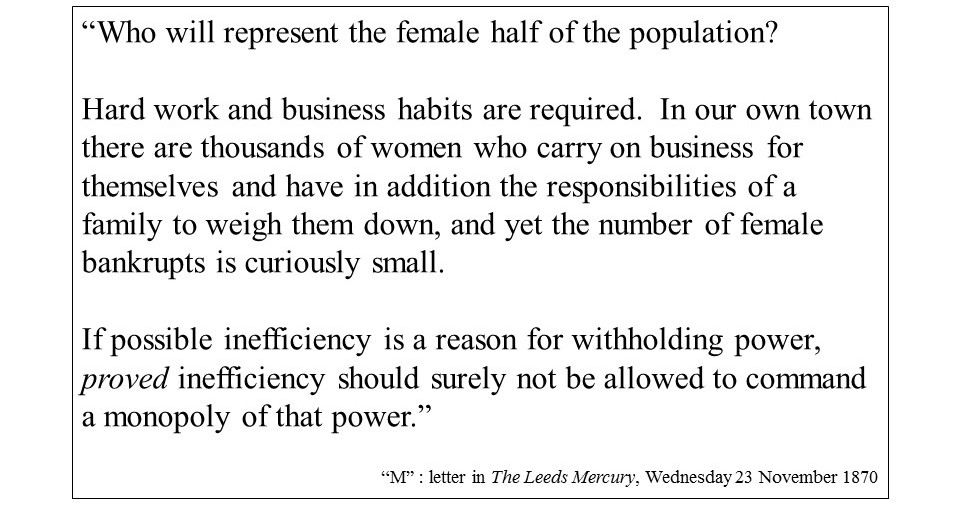
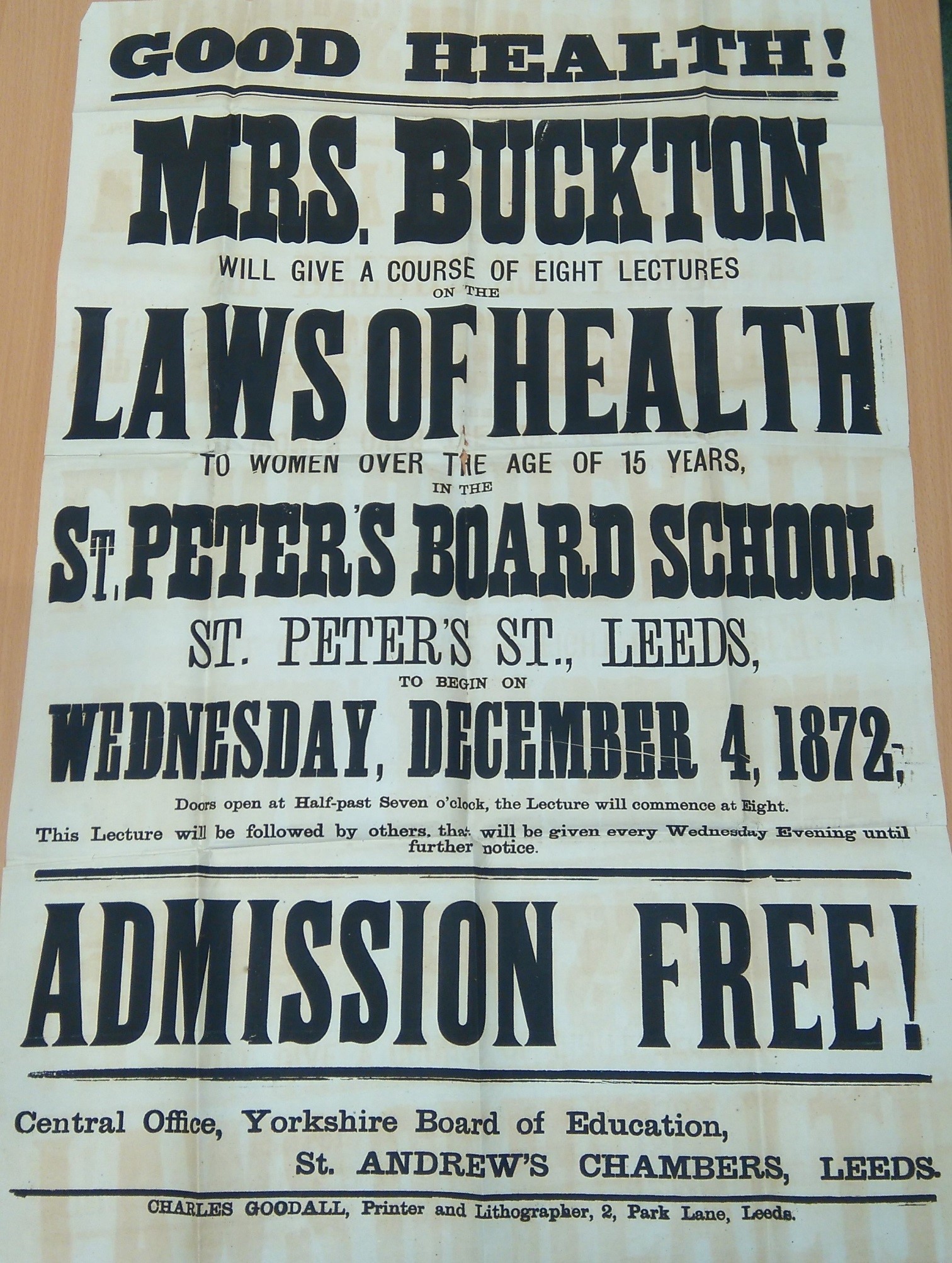
Catherine was appointed Secretary to the Leeds Women's Suffrage Society when it was formed in 1871 but she also volunteered to provide classes "explanatory of the laws of health to working women" which were organised by Yorkshire Ladies Council of Education.
Her lessons proved very popular. They were free and for women only as she felt this would allow her audience to speak more freely to her; she placed great emphasis on time before and after the class for discussion and questions. Each class consisted of an hour's lecture and a questionnaire to test understanding of the week's topic. At the end of the course, there was a prize, a book donated by the Yorkshire Ladies Council.
Attendance grew by word of mouth until she was regularly attracting audiences of more than 100 women. The Yorkshire Ladies Council purchased diagrams, a skeleton and microscopes, and Catherine's son, Walter, demonstrated experiments to explain the fermentation of beer, for example. In another lesson she brought an eider duck to the class.
She was invited to lecture in other towns; at Saltaire, there were audiences of 500 women. Her fame spread and Queen Victoria's daughter wrote from Germany for information. Then, in October 1873, she published a Report on her work. It cost tuppence which made it readily available and it was republished 3 times in as many months.
The second triennial School Board elections were in November 1873. Party political lines had hardened over the 3 years since the previous elections and the Liberal Party was determined to take advantage of public dissatisfaction with the performance of the existing Board. The nine women members of School Boards elsewhere in the country had worked hard to prove their worth; now the Liberals in Leeds invited Catherine Buckton to stand as one of the candidates.
She had a high public profile and was the author of a popular pamphlet. She came second in the poll.
She resigned from all her other commitments to concentrate on this new role. The workload for a committed Board member was considerable, involving 2 or 4 meetings each week and a heavy schedule of organised and unannounced school visits.
After Mrs Buckton joined the School Board, the YLCE paid Edith Pechey, who was training to be a doctor, to deliver the lectures. Dr Pechey finally qualified in 1877, only the third woman to be registered by the British Medical Council. She opened a medical practice on Park Square in Leeds.
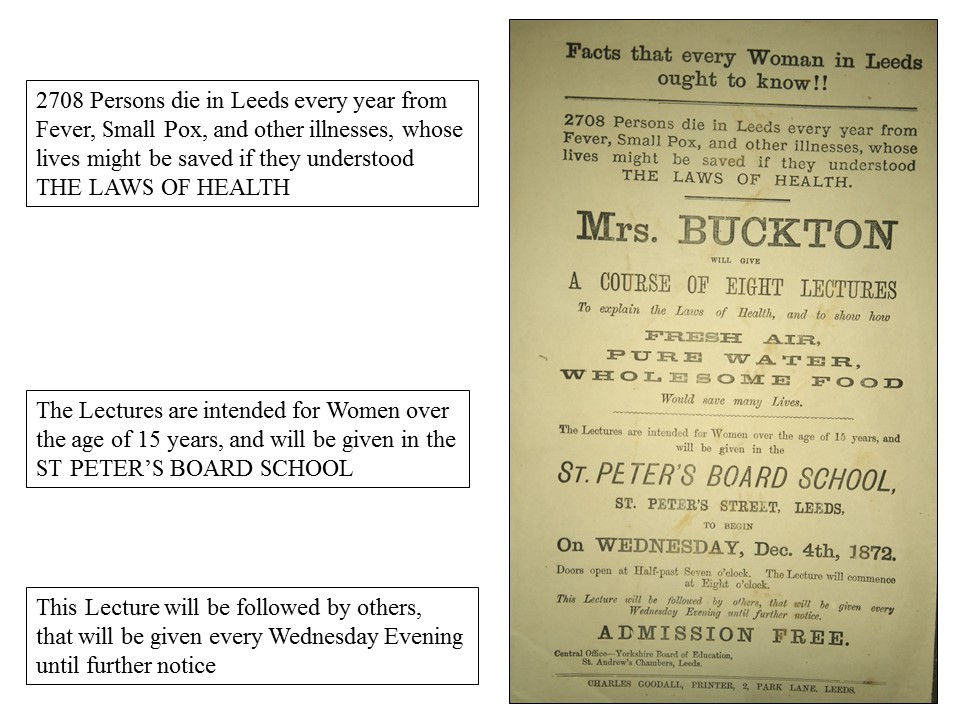
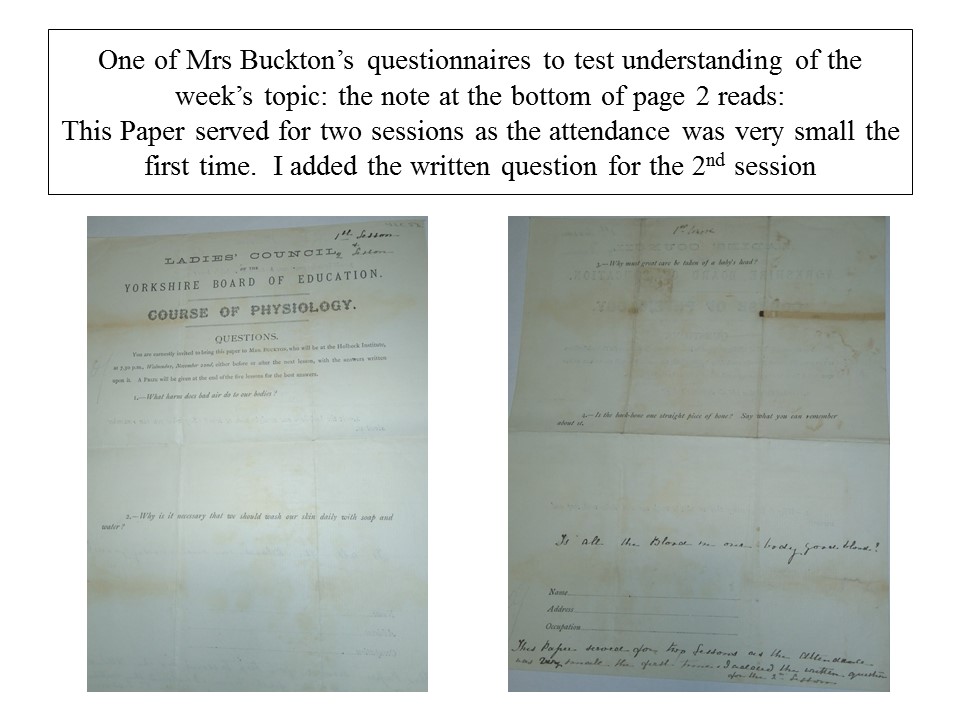
Letter from Princess Louise of Hesse (Queen Victoria's daughter, Alice) requesting information about Mrs Buckton's classes on Physiology and Hygiene
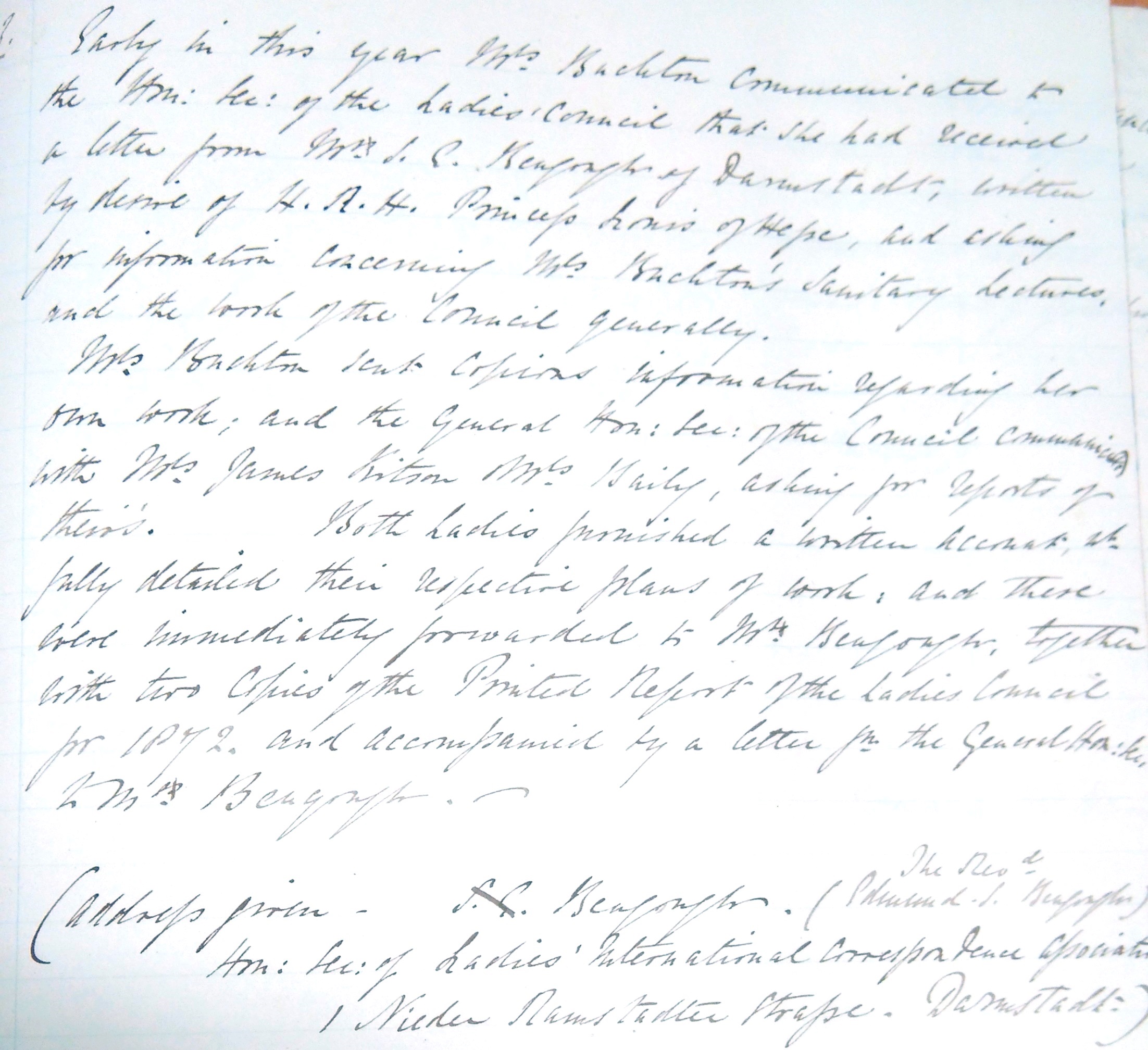
Report by Ellen Heaton as Secretary of the Health Committee, Yorkshire Ladies' Council of Education on the courses of Health and Physiology given by Catherine Buckton and others.
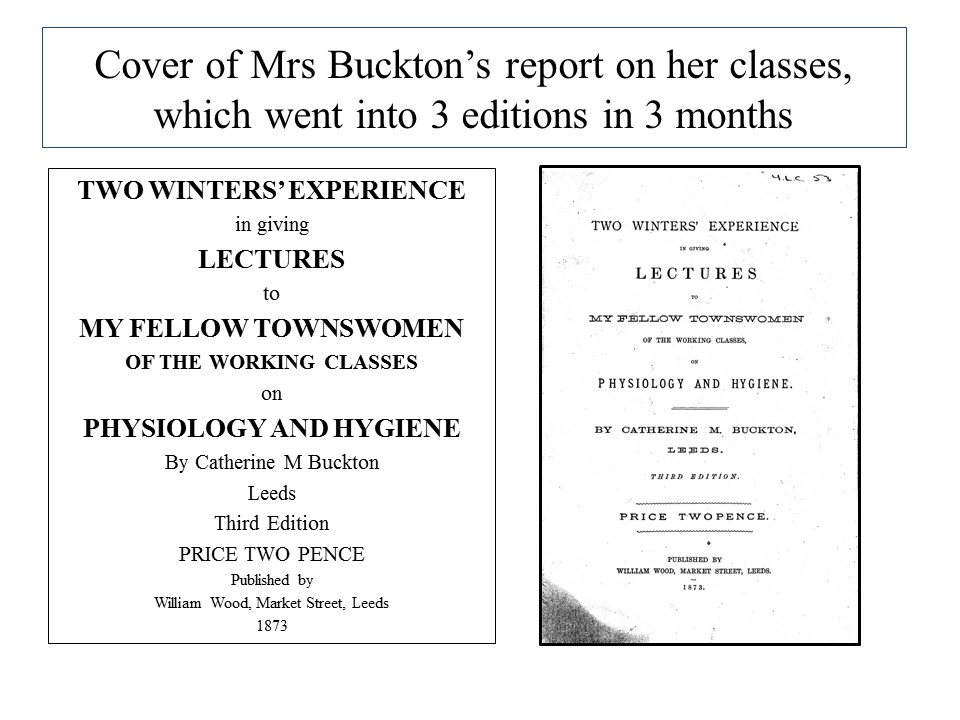
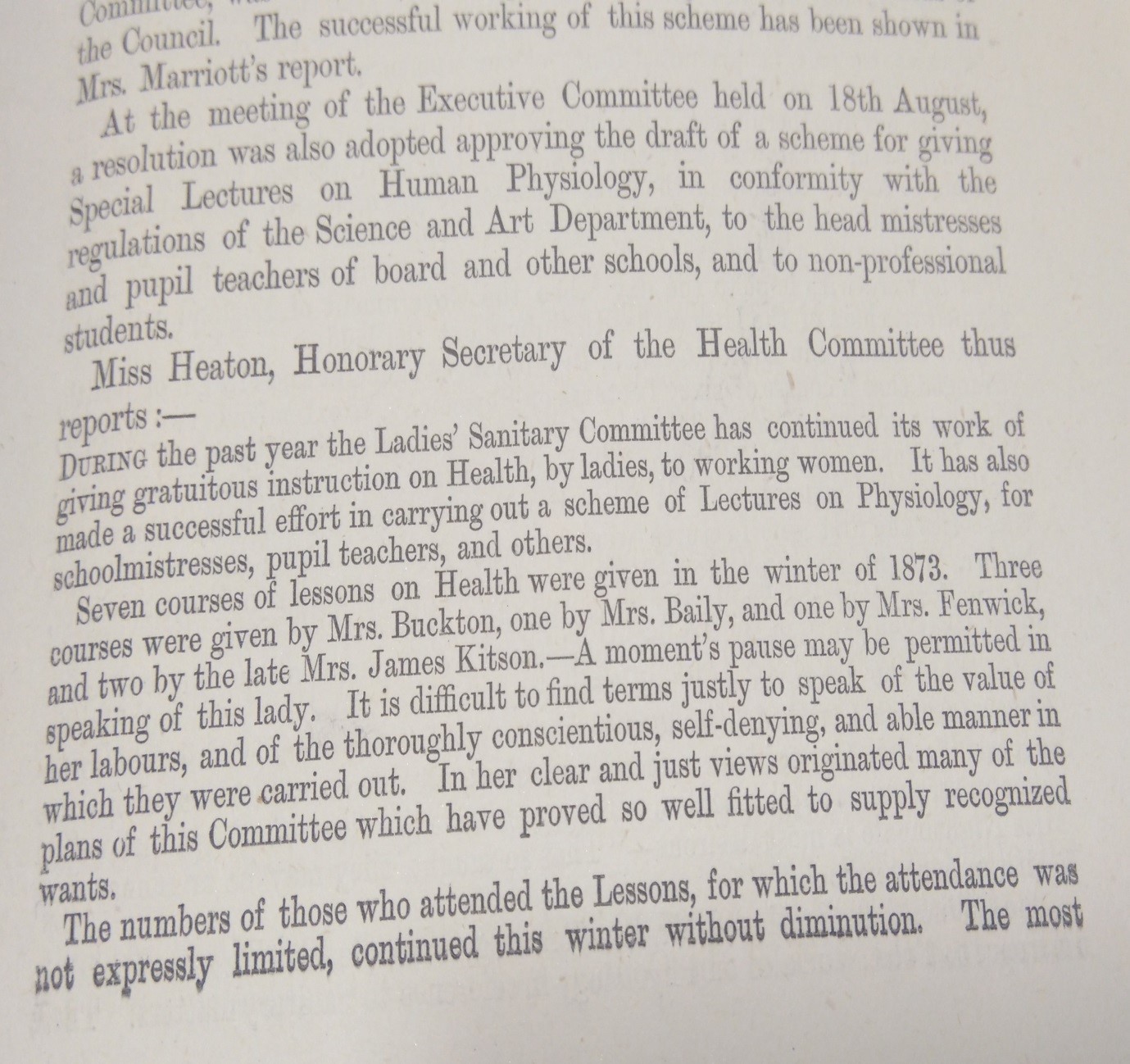
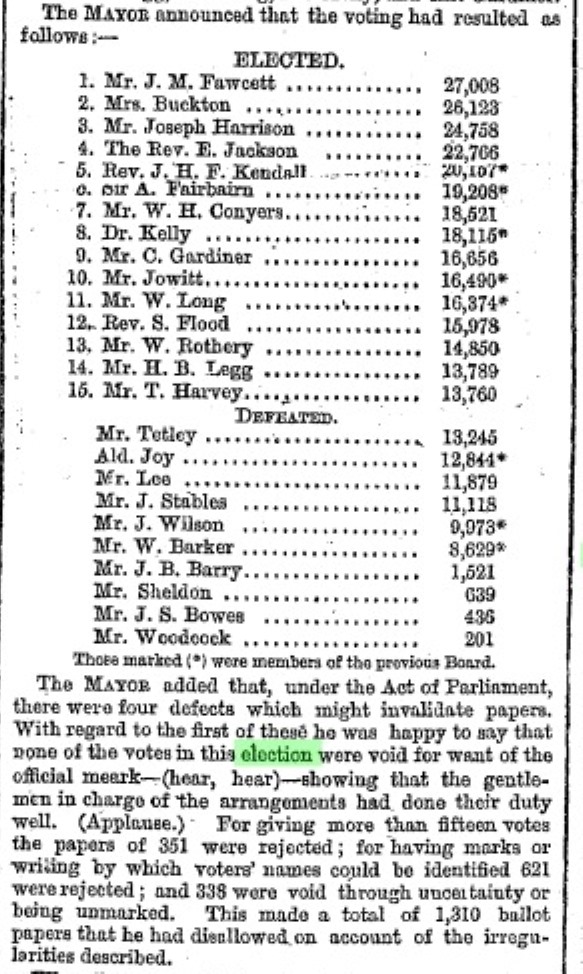

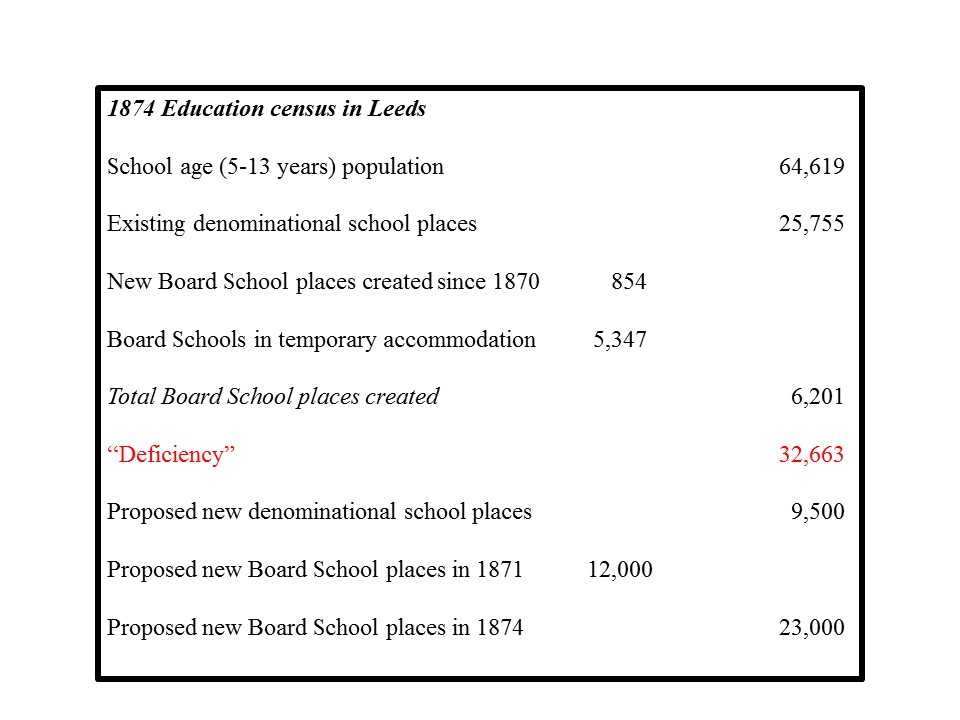
Extract from Leeds School Board Second Report being a Review of Proceedings from November 1873 to November 1876Lectures on Laws of Health and Instruction in Cookery
During 1874 and 1875 Mrs Buckton generously undertook to instruct scholars and pupil-teachers, from the Board Schools in the neighbourhood of New Wortley, in Physiology and the Laws of Health. Notwithstanding that the attendance was purely voluntary, and after school hours, the room was well filled throughout the course; the young people reproducing, week by week on paper, the substance of the instruction. From the great interest excited in these lectures, Mrs Buckton was induced to publish them under the title of "Health in the House" and to give them orally again in another part of the town during 1875 and 1876, when from 200 to 300 elder scholars and pupil-teachers attended with unflagging interest. About sixty girls, who had received at these lectures a grounding in the nature of foods and the principles of heat, were selected for a course of lessons at the Leeds School of Cookery; and so satisfactory were the results considered, that the number attending has been subsequently doubled.
As the only woman on the Board, it was taken for granted that Catherine would assume responsibility for the education of girls.
Initially she served on the Attendance Committee and the Schools Management Committee but in her nine years in office she was to sit on all the Committees except Finance. In her first three years as a Board member, she attended 34 out of 38 Board meetings and 83 committee meetings.
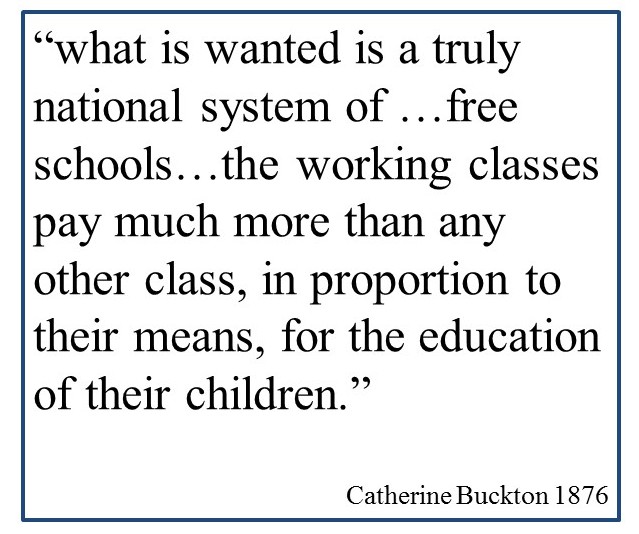
From the beginning, she refused to be intimidated by the fact that she was the only woman member. Her obituary in the Leeds Mercury notes "she threw herself into the work with enthusiastic vigour." She engaged fully with educational policy, emerging as a vigorous advocate for free and non-denominational education.
Less than a decade earlier it was unheard of for a woman to speak at a public meeting but, now, in committee and from the platform, Mrs Buckton argued eloquently for "a truly national system of ...free schools". When another Board member argued that free education would reduce the parents' self-respect, she retorted that parents of children at grammar schools who appropriated scholarships and endowments intended for "poor scholars" seemed to suffer no such loss.
She actually persuaded the Leeds Board to reduce fees to 1 penny per week for infants and 2 pence for juniors - but the Board of Education, after receiving a deputation of Leeds clergymen, over-turned the decision, insisting on the full 3 pence per child per week. School fees were not abolished until 1891.
She refused to allow the prosecution of parents who kept children away from school where their only option was a denominational one, even after compulsory education became law in 1880.
For two years Catherine taught extra-curricula and free lessons in Cookery and Health & Sanitation to Board school pupils. She describes "a large class of 200 to 300 boys and girls attending voluntarily, out of school hours, a weekly course consisting of 22 lessons." Mrs Buckton provided the ingredients for the dishes prepared and the pupils were allowed to purchase them at cost price to take home. A chosen few were paid to clear up after the lesson.
In 1876, the Board of Education formally adopted "Domestic Science" to the national curriculum. Leeds School Board was, of course, already a recognised leader in the field. They were now able to appoint full-time teachers of cookery and sanitation. This was the first generation of pupils to come from homes where an oven or a gas fired range might be available.
Catherine designed the syllabus - including detailed lesson plans. It was published as "A Cookery Scheme for Day Schools" and adopted by most other School Boards in the country.
However - there was a shortage of trained women teachers for these subjects. Catherine retained her connections with the Yorkshire School of Cookery after it opened in 1874. She now brokered a deal whereby the School Board and the School of Cookery jointly offered teacher training and then employed the qualified teachers.
She arranged places and scholarships at the School of Cookery for the ablest Board School girls which unlocked a wealth of new career opportunities, not just domestic service, for them. They became teachers, factory and sanitary inspectors, and pioneers in the development of health and safety, trading standards and human resources.
Illustrations from Mrs Buckton's "Home and School Cookery
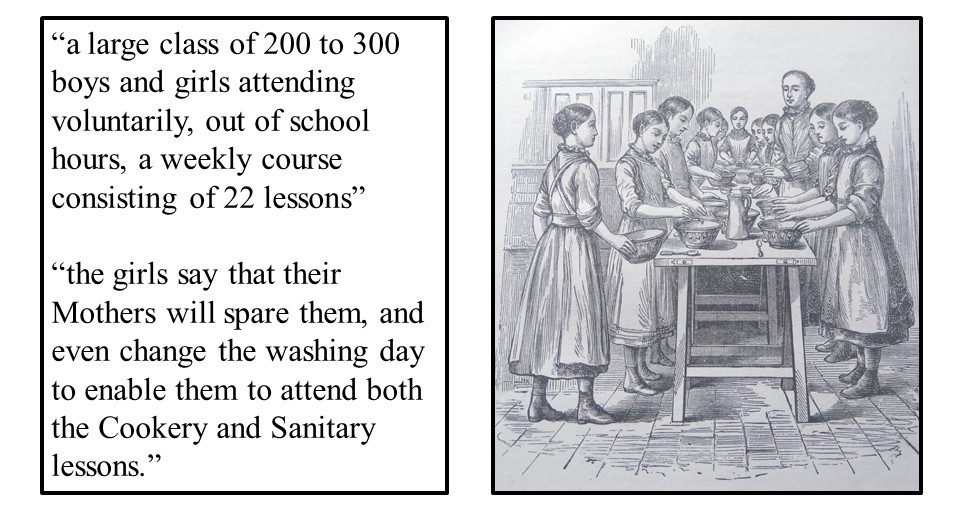
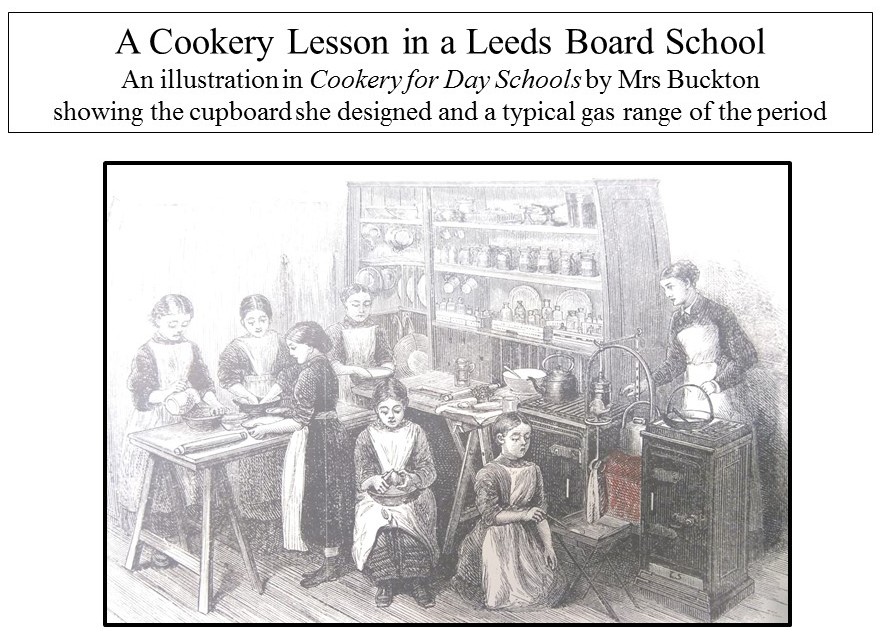
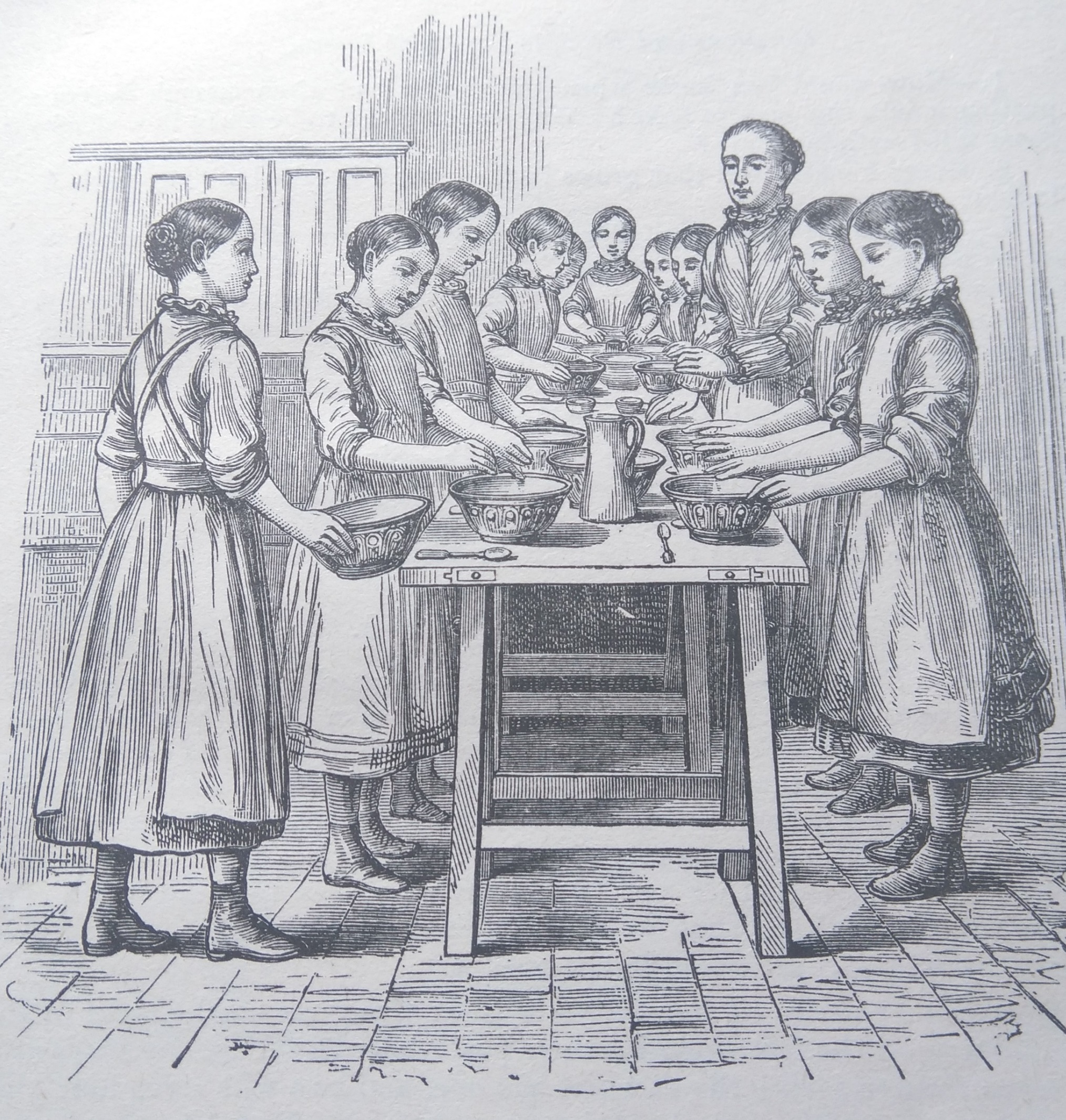
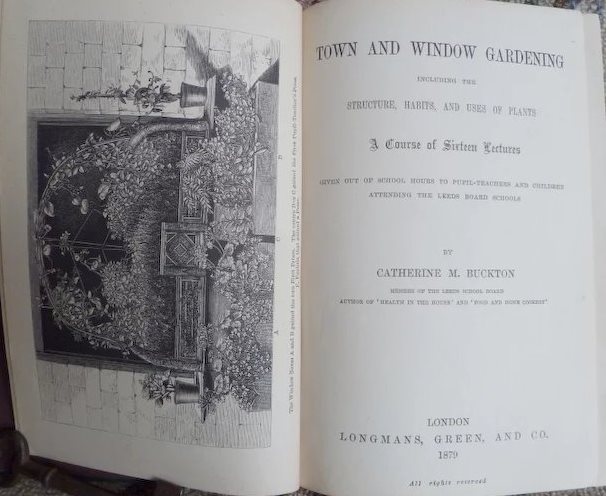
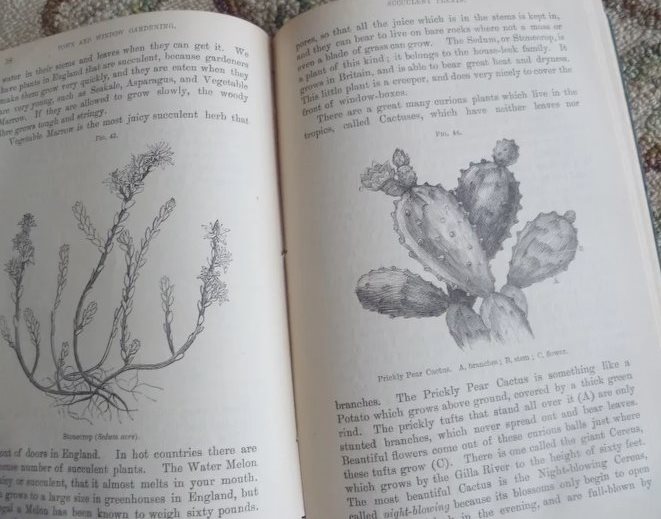
Catherine also brought her love of nature and plants into the classroom, introducing the study of botany and taking the pupils on nature rambles.
She provided pots, soil and seeds, encouraging children from urban slums who had rarely seen a blade of grass to learn the pleasure of growing things.
There were annual gardening competitions with prizes. One year over a thousand window box entries went on public display.
She published another book Town and Window Gardening.
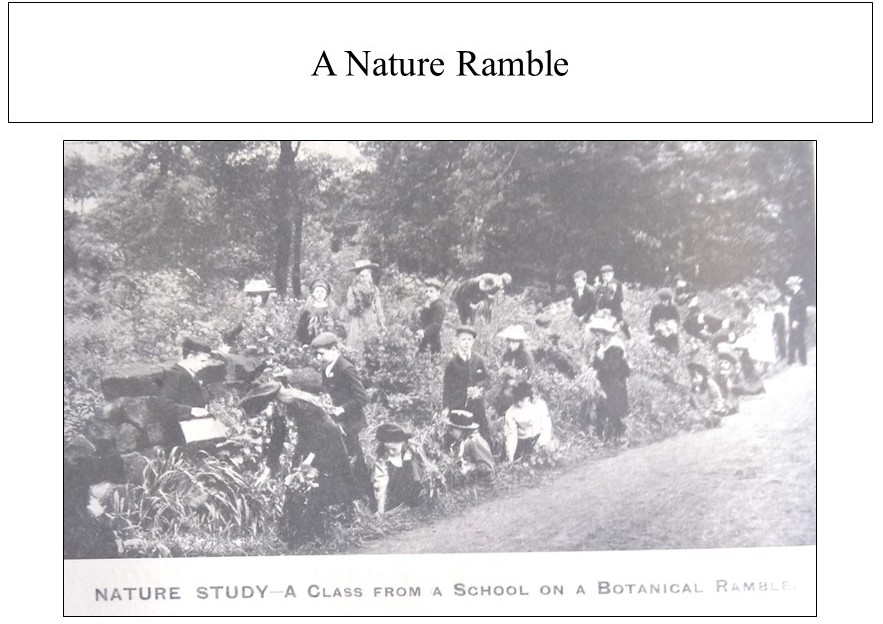
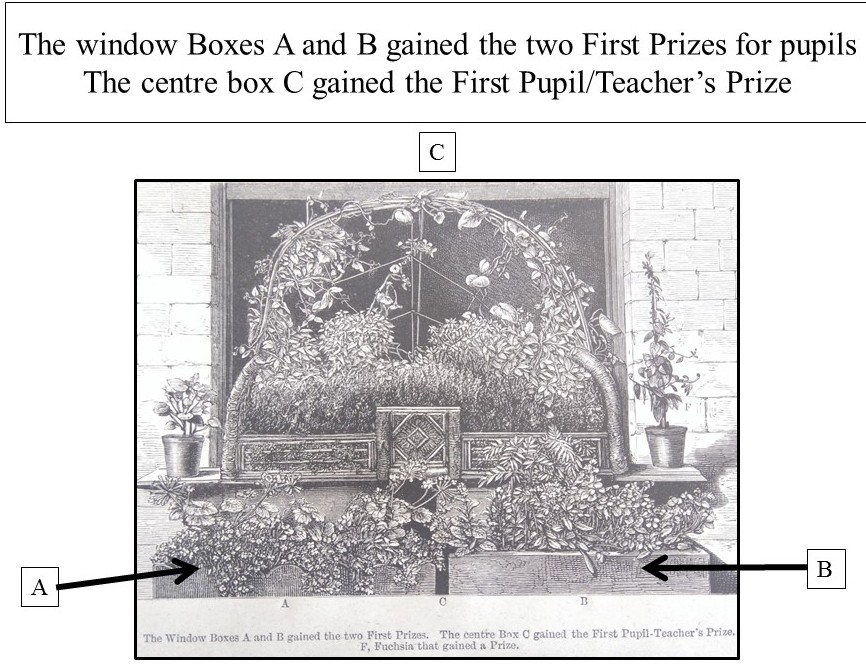
By 1876 Catherine had proved herself hard working and highly competent, able to make election promises a reality and an astute politician. The Liberals recognised her value to the Party.
She wrote their election manifesto for the School Board election that year and made the majority of keynote speeches at the hustings. The Liberals were returned with her name at the top of the poll.
Now the Leeds School Board were able to plan beyond mere numbers.
The pupils had begun to differentiate themselves into groups with different needs. Leeds, with Mrs Buckton at the forefront, had already initiated kindergarten teaching for young children and evening classes for part-timers and early leavers. Now they began to plan schools for truant and delinquent children; preventative medical and dental care; separate schools for children, deaf children and those with special needs.
A teacher training scheme was offered, eventually linked to the Yorkshire College and leading to the equivalent of a university degree. It was available to all pupil teachers in Leeds at first then extended to the whole of Yorkshire.
Mary Gawthorpe completed her teacher training through this scheme and writes about how intellectually rigorous and challenging it was.
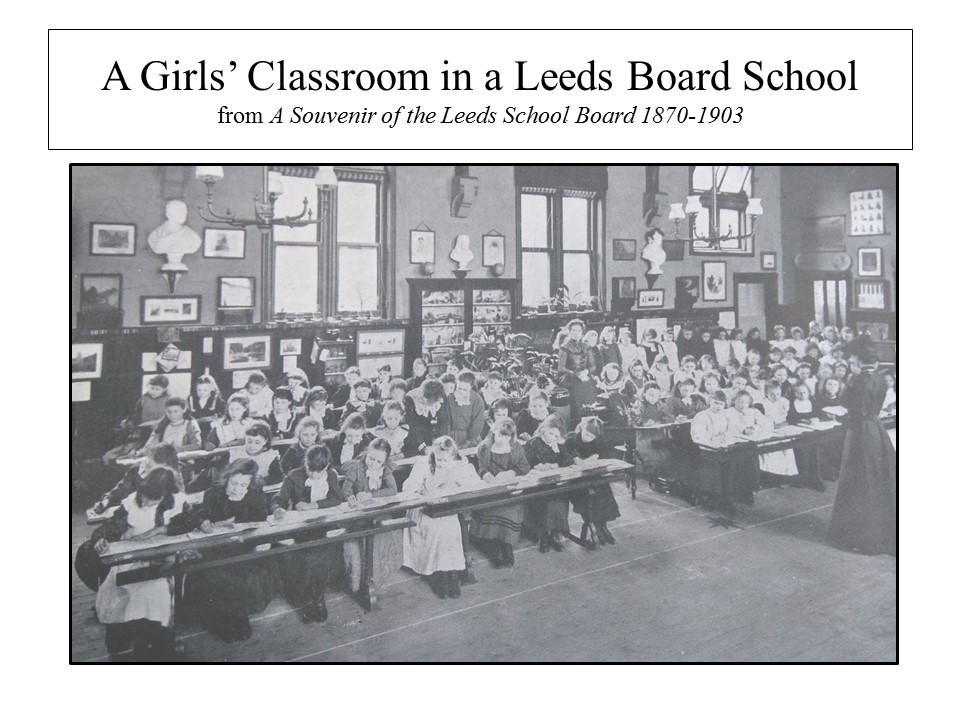
By the 1879 elections Catherine was so overworked that she was begging for another woman on the School Board to help her. Her friend, Alice Cliff Scatcherd, offered to stand as a candidate.
Despite Mrs Scatcherd bringing out 92% of women voters in the Town Council elections, the Liberals declined her offer. She was too loyal a Party member to stand as an independent candidate.
The Conservatives regained the majority on the School Board and Catherine found herself the leader of the Liberal minority, having to defend the very existence of Board Schools and non-sectarian education.
In 1881 Catherine's husband decided to retire from business and move to London.
Her parting gift to the Leeds Liberal party was the fifty-one page Sketch of the Elementary Education Question and the Work of the Leeds School Board.
In it she demonstrated how the Conservatives and Church parties had:
- manipulated policy to worsen teacher-pupil ratios,
- reduced teaching salaries,
- increased school overcrowding and
- syphoned off central government funding to promote denomination, and particularly Anglican, schools
The Liberals adopted it as their Manifesto for the 1882 election and were resoundingly returned to power – without her.

Catherine continued to publish. She updated The Cookery Scheme for Day Schools to bring it in to line with new regulations in 1882.
This was followed by Our Dwellings: Healthy and Unhealthy – addressed to girls attending the Leeds Board Schools in 1885. It is a searing indictment of the back-to-back terraces so beloved of Leeds Council. Was it irony or revenge that the Council named a block of such terraces in the Holbeck after her? Built in the 1920s, they were demolished fifty years later.
Her last book, Comfort and Cleanliness was published in 1894. In it she writes:
"The Misses Garrett, who decorated the house for us, greatly improved the entrance and staircase by artistic windows, to admit both light and air, and made every room from the basement upward look cheerful and pretty by covering the walls and woodwork with light papers and paint, that have proved most durable, to the great surprise of those who use dark papers and paint on the plea of economy and to hide the dirt."
The "Misses Garrett" were Rhoda and Agnes Garrett who had spoken at the public meeting in Leeds in 1871 when the Leeds Suffrage Society was formed with Catherine as Secretary. They created the first all-female design and decorating company in Britain. Unfortunately no records or images of Catherine's Hampstead home survive but this reproduction of a Garrett-designed wallpaper gives an idea of their work.
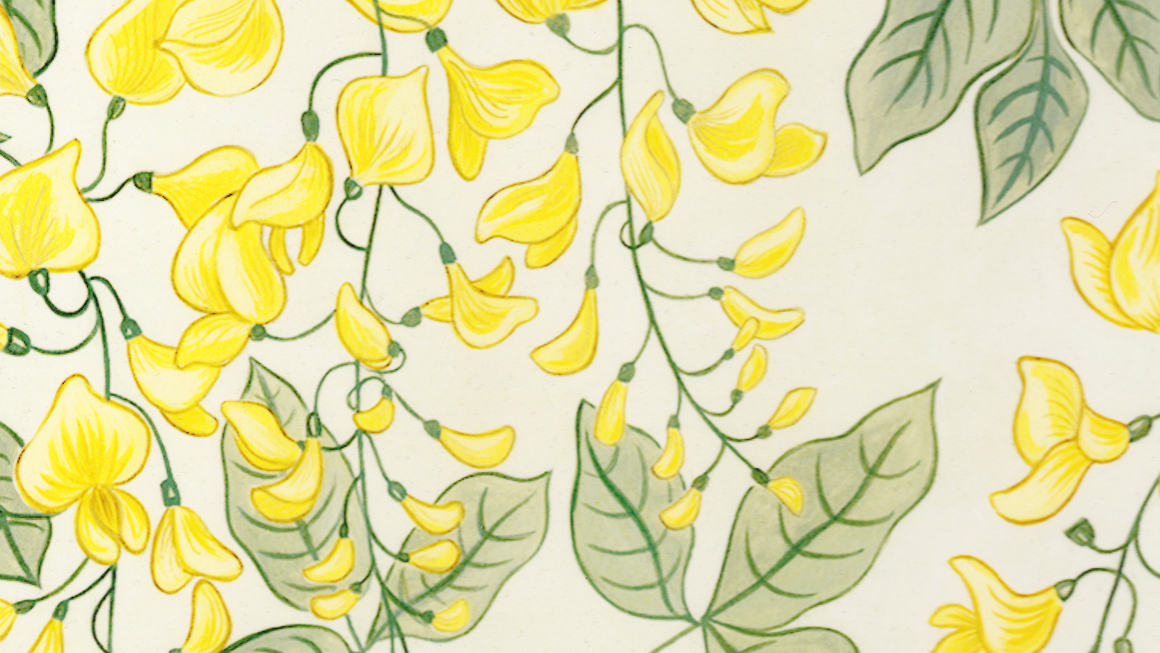
Catherine died in London in 1904. Her elder sister established a scholarship in her name for women students in Cardiff.
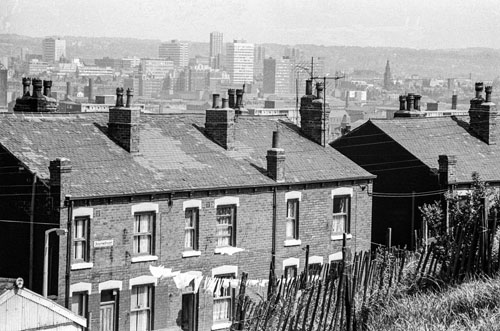
Buckton Street, Holbeck. Substantial red-brick back-to-backs built in blocks of eight dwellings with toilet blocks and midden between them. This photograph was taken in 1969, just prior to demolition.